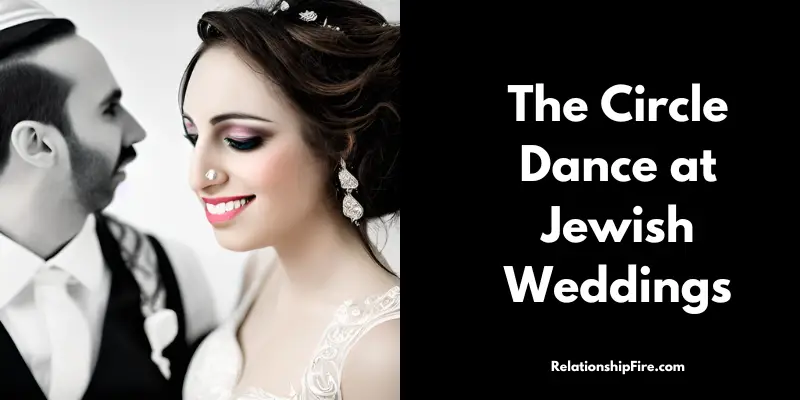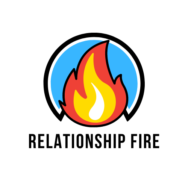I recently had the privilege of attending a Jewish wedding where I was able to experience the traditional circle dance firsthand.
The bride and groom were at the center of the circle, and it was clear that they were surrounded by nothing but love and support. The sound of the music and the laughter of the guests echoed off of the walls, creating a truly joyful atmosphere.
It was an unforgettable experience, and I am so grateful to have been a part of it.
That’s what motivated me to write this blog post with 13 quick answers to questions about the circle dance at Jewish weddings.
What Is a Circle Dance at a Jewish Wedding? (Hora Dance Explained)

The Hora is a traditional circle dance that is often performed at Jewish weddings.
The dance is believed to have originated in the Middle East, and it is still commonly performed in Israel and other countries with large Jewish populations.
The Hora typically begins with the bride and groom seated in chairs.
And then all of the guests form a series of circles around them. As the music plays, everyone in the circle dances around the bride and groom, who often remain seated on their chairs throughout the duration of the dance.
The bride and groom hold one to each end of a large napkin or handkerchief for the entire dance.
The Hora is usually accompanied by lively music, and it often ends with everyone in the circle cheering and clapping for the happy couple.
Ultimately, the Hora is a joyful and traditional way to celebrate a Jewish wedding, and it is sure to bring smiles to the faces of all who participate.
Why Do Jewish People Do the Hora Dance at Weddings?
There are many reasons why this dance is so significant to the Jewish community.
The three main reasons are:
- Tradition
- Social connections
- Celebration
First, the Hora is steeped in tradition. For centuries, Jewish people have danced the Hora to celebrate special occasions.
This dance is a way of connecting to one’s heritage and celebrating the continuity of the Jewish people.
Second, the Hora is a way of forming social connections. When people come together to dance, they create bonds of friendship and community.
The Hora provides an opportunity for people to connect with one another and build lasting relationships.
Finally, the Hora is a way of celebrating the bride and groom.
This dance is a joyous expression of love and support for the newlyweds. By dancing the Hora, guests can show their blessings for the new couple as they embark on their life together.
Therefore, the circle dance is a significant part of Jewish culture because it connects people to their heritage, builds social bonds, and celebrates important milestones.
Where Is the Jewish Circle Dance Performed?
The Jewish circle dance is a traditional dance that is often performed at weddings.
Although it is called a wedding dance, it usually happens at the wedding reception. The dance could occur at the wedding itself but it usually is only at the reception.
The reason for this is that the reception is a time when the guests can let loose and have fun.
It is also a time when the bride and groom can show their appreciation for their guests. The Jewish circle dance is a great way to do both of these things.
The dance is simple and easy to learn, and it is a lot of fun.
It is also a great way to get everyone involved in the celebration.
When Is the Circle Dance at a Jewish Wedding Done?
The circle dance can be performed at any time during the wedding reception.
However, it’s usually done at two specific times:
- At the beginning of the reception
- After dinner at the reception
This joyful dance is sometimes done immediately after the bride and groom are announced at the wedding or right after dinner to start the dancing portion of the reception.
The circle dance is a great way to get all of the guests involved in the celebration and is a wonderful way to start the evening off with a bang.
How Long Is the Hora Dance?
The length of the Hora circle dance depends on the wedding couple and the guests.
However, most Hora dances last for a few minutes, about the length of a single song. A good rule of thumb is 3-5 minutes long.
How Long Is a Traditional Hora Dance?
A traditional Hora dance is usually longer than a non-traditional performance of the ritual.
At some weddings, the circle dance can last for several songs and even up to an hour or more. At other weddings, the circle dance might occur several times during the reception.
How Long Is a Short Hora Dance?
A short Hora dance is a few minutes long.
Either for the full length of a single song (3-5 minutes) or perhaps even shorter. Short Hora dances usually happen when the wedding guests are older or the bride and groom prefer a shorter dance.
There is no right or wrong timeframe for the circle dance.
Who Participates in the Jewish Circle Dance?
All of the guests, including the bride and groom, wedding party, and other guests, join in the hora.
The bride and groom usually stand in the center of the circle, with their wedding party around them. The rest of the guests form a larger circle around them.
As the music starts, everyone begins to dance.
While everyone is encouraged to participate in the dance, older guests or differently abled guests may not be able to fully participate.
Who Starts the Jewish Circle Dance at Jewish Weddings?
At a Jewish wedding, the circle dance is usually started by the bride and groom.
However, it’s not uncommon for friends and family members to join in and start dancing around the couple as well. The Hora song is typically played in the background, and as more and more guests join in on the dance, the married couple will eventually be raised up into the air.
This is considered a very special moment, and it’s a great way to get everyone involved in the festivities.
It’s also a great way to get everyone up and moving around, which is always a good thing.
Who Do You Lift In Chairs During the Circle Dance?
As anyone who has been to a Jewish wedding knows, the circle dance is a highlight of the reception.
Usually, only the bride and groom are lifted up on their chairs as the rest of the wedding guests dance around them. The idea is to celebrate the new marriage and the union of two families.
But what about the other important people in the lives of the bride and groom?
What about the parents, grandparents, and siblings who have supported them throughout their lives?
At a recent wedding I attended, the bride and groom surprised everyone by lifting up their parents during the circle dance. It was a beautiful moment that celebrated not just their new marriage, but also the family that had helped to make it possible.
It was a reminder that, while a wedding is a joyous occasion for all, it is also an important time to show our appreciation for those who have lifted us up throughout our lives.
What Song Do You Dance the Hora To?
The circle dance at Jewish weddings is usually danced to a song called Hava Nagila.
Hava Nagila is a traditional folk song.
The name of the song, “Hava Nagila” is Hebrew for “Let us rejoice.” It’s a beautiful and haunting song of celebration for the bride, groom, and everyone involved with the wedding.
Who Plays the Circle Dance Song at Jewish Weddings?
A DJ, band, or singer can play the Hava Nagila song.
The song is also known as the circle dance song or Hora dance song. It doesn’t matter how the song is performed or played, only that it is a part of the traditional ceremony.
The song is popular at both Jewish weddings and at bar or bat mitzvah celebrations.
Where Does the Circle Dance at Jewish Weddings Come From?
The history of the Hora dance is pretty fascinating.
Many civilizations in the Balkans and Southeastern Europe have done traditional circle dances for generations. The modern-day hora was first conducted in 1924 with Jews that settled in Palestine.
In the decades since then, Horas are now performed in a circle, with participants linking hands and marching in coordinated movements.
Men and women dance separately in their own circles in more traditional Jewish communities, although in more modern Jewish communities, men and women dance together coed, with the pair standing in the center of the circle.
The Hora is not only a lovely sight, but it is also a terrific time-honored opportunity to come together.
How Many Circles Are There In the Circle Dance at Jewish Weddings?
There can be several circles in the Jewish circle dance.
Typically there is one or more large circles that involves most of the wedding guests. A smaller circle (and sometimes series of smaller circles) of people dance closer to the wedding couple.
Typically, the closer you dance to the couple, the closer you are to the bride and groom.
Therefore, there are usually at least two circles:
- A small circle close to the wedding couple
- A larger circle that surrounds the smaller circle
Here is a good video that shows you visually how the circle dance is performed:
Other Names for the Circle Dance at Jewish Weddings
As you may have already noticed, the circle dance is known by many names.
Check out this list of associated names for the circle dance:
- Hora
- Hora dance
- Chair dance
- Hava Nagila dance
- Jewish wedding dance
- Jewish dance circle
Jewish Wedding Dance Crossword
If you just came here looking for the answer to the crossword puzzle question, here’s the answer.
The Jewish wedding dance is called Hora.
That should fit nicely into the four letter “boxes” in your crossword puzzle. If that doesn’t work, then try, “the circle dance,” or the “Hava Nagila dance.”
One of those options should definitely work.
Final Thoughts: The Circle Dance at Jewish Weddings
If you ever get the chance to experience a Hora circle dance, I hope you don’t hesitate to join in.
We have a lot of other articles on this site about weddings and relationships. Check out a few before you go.
Related posts:
- 21 Best Man Speech Examples & Ideas for the Groom’s Brother
- Can You Wear White Accessories to a Wedding? (11 Ok Items)
- Is Wedding Videography Worth It? (Yes, 13 Reasons Why)
- Can You Wear Chinos to a Wedding? (9 Things You Must Know)
